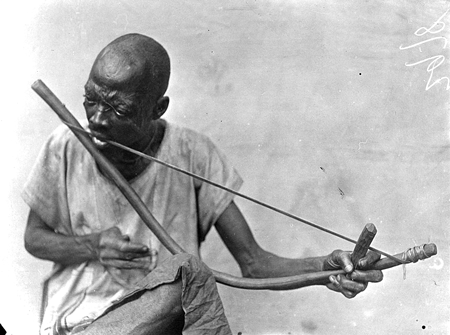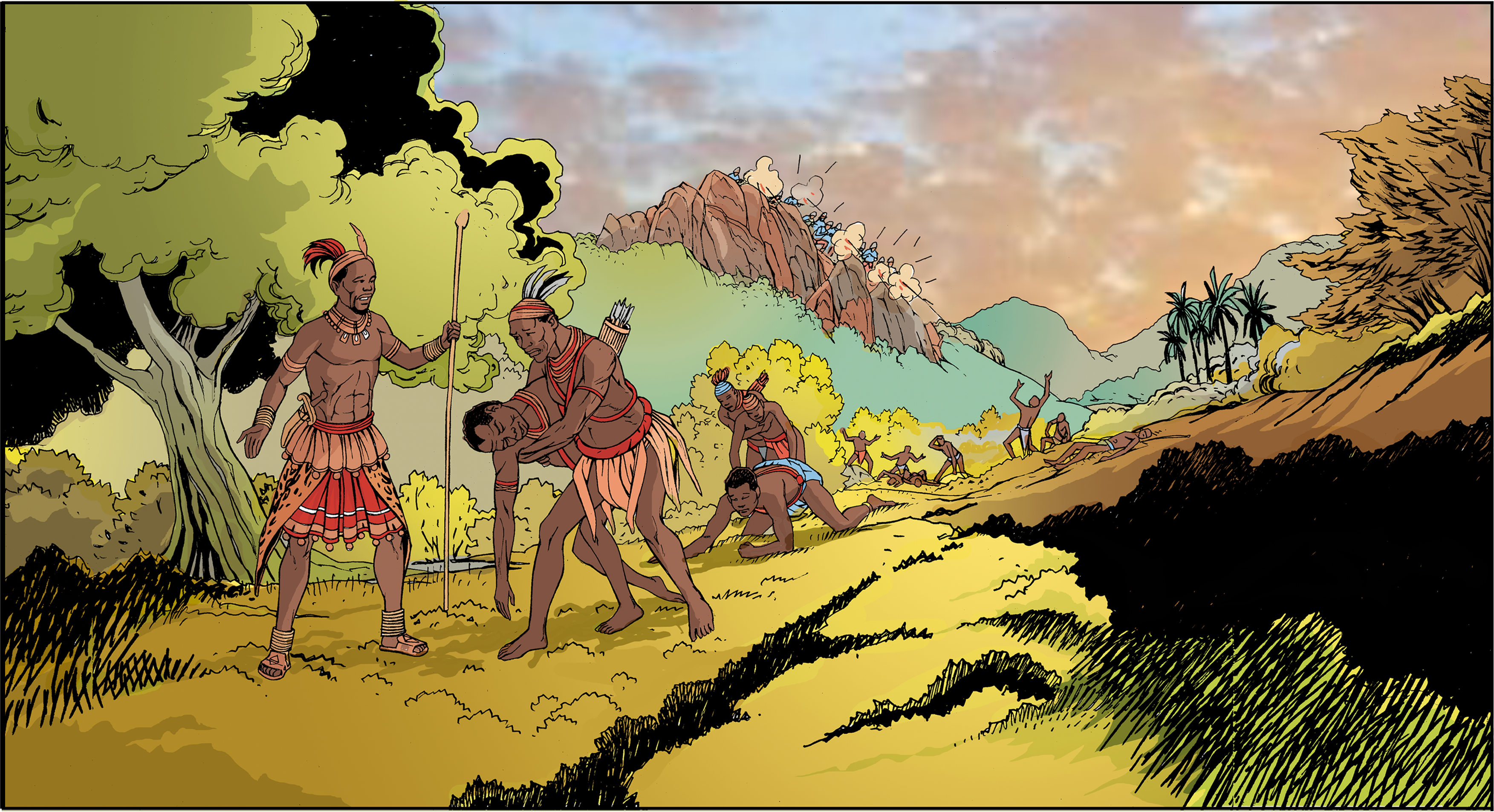|
Danmyé
The Danmyé or Ladja (also known as ''Ladjia'', ''Kokoyé'', ''Wonpwen'') is a martial art from Martinique that is similar to Brazilian capoeira and to other arts in various Caribbean islands (Guadeloupe, Haiti, Jamaica). Ladjia is based on the prominent use of kicks and head butts, as well as hand blows. While punches became more common in the late 20th century, earlier periods featured kicks, sweeps and acrobatic defenses. Danmyé represents martial practice where two players engage in combat within a circle (''won'') formed by supporters (''atlaj'') and spectators, regulated by an orchestra (''mizik-la''). The orchestra typically consists of a drum (''tambou''), played by two people, accompanied by chants, sometimes improvised, and rhythmic Clapping, hand claps. This music is directly connected to the Kalennda-Bèlè dances. One of the characteristics of Danmyé is the use of cunning to deceive the opponent. Name While ''danmyé'' and ''ladja'' are frequently confused now ... [...More Info...] [...Related Items...] OR: [Wikipedia] [Google] [Baidu] |
Capoeira
Capoeira () is an Afro-Brazilian martial art and game that includes elements of dance, acrobatics, capoeira music, music, and spirituality. It likely originated from enslaved Mbundu people, of the Kingdom of Ndongo, in present-day Angola. The Mbundu of Ndongo had a formal military in which soldiers were professionally trained for combat. When Mbundu people were captured and sold into the Atlantic Slave Trade, they would have brought these fighting abilities with them to Brazil, where it developed into Capoeira. It is known for its acrobatic and complex manoeuvres, often involving hands on the ground and inverted kicks. It emphasizes flowing movements rather than fixed stances; the ''List of capoeira techniques#Ginga, ginga'', a rocking step, is usually the focal point of the technique. Though often said to be a martial art disguised as a dance, capoeira served not only as a form of self defense, but also as a way to maintain spirituality and culture. Capoeira has been practic ... [...More Info...] [...Related Items...] OR: [Wikipedia] [Google] [Baidu] |
Engolo
N'golo (anglicized as Engolo) is a traditional Bantu martial art and game from Angola, that combines elements of combat and dance, performed in a circle accompanied by music and singing. It is known as the forerunner of capoeira. Engolo has been played in Africa for centuries, specifically along the Cunene River in the Cunene Province of Angola. Ngolo finds its inspiration in nature, involving the imitation of animal behaviors. Examples include mimicking a zebra's kicking motion or emulating the swaying of trees. This warrior dance is not merely ritualistic; serious injuries have been known to occur during its practice. The combat style of engolo encompasses a variety of techniques, including different types of kicks, dodges, and takedowns, with a particular emphasis on inverted positions. Many of the iconic capoeira techniques, such as '' meia lua de compasso'', scorpion kick, '' chapa'', '' chapa de costas'', '' rasteira'', L-kick, and others, were originally developed wit ... [...More Info...] [...Related Items...] OR: [Wikipedia] [Google] [Baidu] |
Capoeira
Capoeira () is an Afro-Brazilian martial art and game that includes elements of dance, acrobatics, capoeira music, music, and spirituality. It likely originated from enslaved Mbundu people, of the Kingdom of Ndongo, in present-day Angola. The Mbundu of Ndongo had a formal military in which soldiers were professionally trained for combat. When Mbundu people were captured and sold into the Atlantic Slave Trade, they would have brought these fighting abilities with them to Brazil, where it developed into Capoeira. It is known for its acrobatic and complex manoeuvres, often involving hands on the ground and inverted kicks. It emphasizes flowing movements rather than fixed stances; the ''List of capoeira techniques#Ginga, ginga'', a rocking step, is usually the focal point of the technique. Though often said to be a martial art disguised as a dance, capoeira served not only as a form of self defense, but also as a way to maintain spirituality and culture. Capoeira has been practic ... [...More Info...] [...Related Items...] OR: [Wikipedia] [Google] [Baidu] |
Engolo
N'golo (anglicized as Engolo) is a traditional Bantu martial art and game from Angola, that combines elements of combat and dance, performed in a circle accompanied by music and singing. It is known as the forerunner of capoeira. Engolo has been played in Africa for centuries, specifically along the Cunene River in the Cunene Province of Angola. Ngolo finds its inspiration in nature, involving the imitation of animal behaviors. Examples include mimicking a zebra's kicking motion or emulating the swaying of trees. This warrior dance is not merely ritualistic; serious injuries have been known to occur during its practice. The combat style of engolo encompasses a variety of techniques, including different types of kicks, dodges, and takedowns, with a particular emphasis on inverted positions. Many of the iconic capoeira techniques, such as '' meia lua de compasso'', scorpion kick, '' chapa'', '' chapa de costas'', '' rasteira'', L-kick, and others, were originally developed wit ... [...More Info...] [...Related Items...] OR: [Wikipedia] [Google] [Baidu] |
Benin
Benin, officially the Republic of Benin, is a country in West Africa. It was formerly known as Dahomey. It is bordered by Togo to the west, Nigeria to the east, Burkina Faso to the north-west, and Niger to the north-east. The majority of its population lives on the southern coastline of the Bight of Benin, part of the Gulf of Guinea in the northernmost tropical portion of the Atlantic Ocean. The capital is Porto-Novo, and the seat of government is in Cotonou, the most populous city and economic capital. Benin covers an area of , and its population in was estimated to be approximately million. It is a tropical country with an economy heavily dependent on agriculture and is an exporter of palm oil and cotton. From the 17th to the 19th century, political entities in the area included the Kingdom of Dahomey, the city-state of Porto-Novo#History, Porto Novo, and other states to the north. This region was referred to as the Slave Coast of West Africa from the early 17th century due ... [...More Info...] [...Related Items...] OR: [Wikipedia] [Google] [Baidu] |




